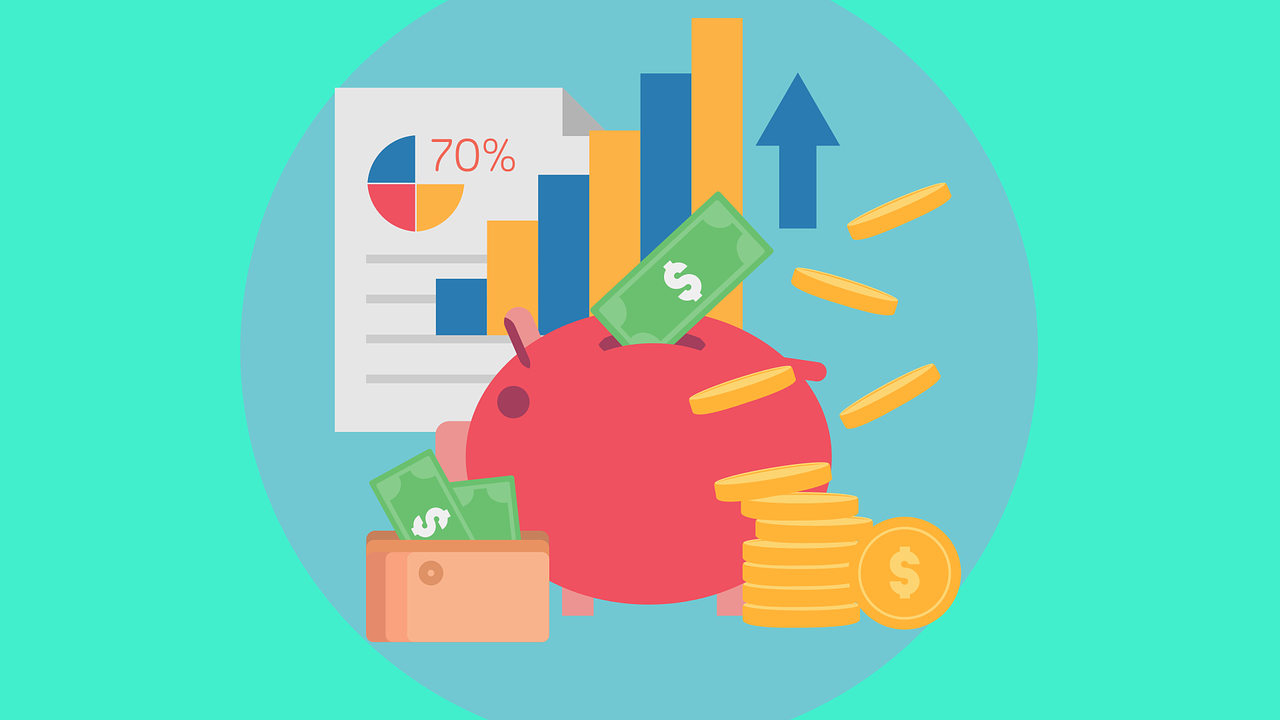When life throws unexpected expenses your way, it’s important to have a safety net in place. That’s where establishing a “rainy day” fund comes in. By proactively saving for unforeseen financial emergencies, you can protect yourself from unnecessary stress and worry. Whether it’s a broken appliance, medical bills, or car repairs, having a dedicated fund specifically for these unexpected expenses allows you to face them head-on without derailing your budget or resorting to high-interest loans. In this article ‘Rainy Day Fund Essentials: Why You Need One and How to Start’, we will explore the benefits of creating a rainy day fund and offer practical tips on how to get started.

Why You Need a Rainy Day Fund
Emergency Expenses
Life is full of uncertainties, and unexpected expenses can arise at any moment. Whether it’s a sudden medical bill, a broken appliance, or an urgent home repair, these emergency expenses can throw off your financial stability. That’s where a rainy day fund comes in handy. By having a dedicated fund specifically for unexpected expenses, you can ensure that you are prepared for any financial curveballs life throws at you.
Job Loss or Income Reduction
Another reason why having a rainy day fund is crucial is the possibility of losing your job or experiencing a significant reduction in income. This can happen unexpectedly, leaving you scrambling to make ends meet and pay your bills. A rainy day fund can provide you with a financial cushion during this difficult time, giving you a buffer to cover your essential expenses until you find a new job or stabilize your income.
Car or Home Repairs
Car and home repairs can be both unexpected and expensive. From a flat tire to a leaking roof, these repairs can quickly drain your bank account if you’re not prepared. By having a rainy day fund, you can confidently handle these repair costs without worrying about dipping into your regular monthly budget or accumulating high-interest debt.
Medical Expenses
Health issues can arise at any time, and medical expenses can quickly add up. Whether it’s an unexpected injury or an unforeseen medical condition, having a rainy day fund can help alleviate the stress of medical bills. By having a designated fund for medical expenses, you’ll be better equipped to handle these costs without putting a strain on your finances.
How to Start Building a Rainy Day Fund
Set a Goal
The first step to building a rainy day fund is to set a clear goal. Determine how much you want to save and what you’re saving for. Having a specific target in mind will help you stay motivated and focused on your savings journey. It’s recommended to aim for at least three to six months’ worth of living expenses in your rainy day fund.
Track Your Expenses
To effectively save, you need to know where your money is going. Start tracking your expenses by categorizing them into different spending categories. This will give you a clear understanding of your spending habits and areas where you can cut back. There are plenty of budgeting apps and tools available that can help you track your expenses effortlessly.
Create a Budget
Once you have a clear picture of your expenses, it’s time to create a budget. A budget will help you allocate your income effectively and ensure that you’re saving enough each month. Identify areas where you can trim discretionary spending and funnel that money towards your rainy day fund. Make sure to prioritize savings in your budget to make steady progress towards your goal.
Reduce Expenses
Reducing expenses is a crucial step in building a rainy day fund. Look for practical ways to cut back on non-essential spending. Can you pack your lunch instead of eating out every day? Do you really need that monthly subscription service? Evaluate your spending habits and identify areas where you can make adjustments. Every dollar saved can contribute to your rainy day fund.
Choosing the Right Savings Account
High-Yield Savings Accounts
When building a rainy day fund, it’s important to choose the right savings account. High-yield savings accounts are a popular option because they offer higher interest rates compared to traditional savings accounts. This means your money will grow faster over time. Look for accounts with low fees and easy accessibility, so you have the flexibility to withdraw funds when needed.
Money Market Accounts
Money market accounts are another option to consider for your rainy day fund. These accounts typically have higher interest rates than regular savings accounts and provide some check-writing capabilities. Money market accounts are ideal if you want a balance of accessibility and higher returns.
Certificates of Deposit
If you have a specific savings goal in mind and don’t require immediate access to the funds, certificates of deposit (CDs) can be a good choice. CDs offer higher interest rates than regular savings accounts, but your money is locked in for a specified period. They are a low-risk investment option that can help your rainy day fund grow over time.
Automate Your Savings
Direct Deposit
One of the easiest ways to save consistently is through direct deposit. Talk to your employer about setting up automatic transfers from your paycheck directly into your rainy day fund. By automating your savings, you won’t even miss the money, and you’ll build your fund effortlessly.
Automatic Transfers
If direct deposit isn’t an option, you can still automate your savings through automatic transfers. Set up recurring transfers from your checking account to your rainy day fund on a regular basis. Choose a specific date that aligns with your pay schedule to ensure you are consistently contributing to your savings.
Round-Up Apps
Round-up apps are a modern and convenient way to save. These apps track your everyday transactions and round up the spare change to the nearest dollar. The rounded-up amount is then deposited into your rainy day fund. It’s a painless way to save without even realizing it.

Other Ways to Boost Your Rainy Day Fund
Take on Extra Work
If you’re serious about building your rainy day fund quickly, consider taking on extra work or side gigs. Whether it’s freelancing, pet sitting, or driving for a ride-sharing service, these additional sources of income can provide a significant boost to your savings. Remember, the more you can save, the faster you’ll reach your savings goal.
Cut Back on Discretionary Spending
Take a close look at your discretionary spending and identify areas where you can cut back. Do you really need that daily latte from the coffee shop? Can you find free or low-cost alternatives to expensive entertainment? By making conscious choices and reducing unnecessary spending, you’ll free up more money to put towards your rainy day fund.
Sell Unused Items
Decluttering your home and selling unused items can not only give you a cleaner living space but also provide extra cash for your rainy day fund. Consider hosting a garage sale, listing items on online marketplaces, or using social media to reach potential buyers. You’ll not only make some money but also simplify your life in the process.
Dealing with Unexpected Expenses
Assess the Situation
When faced with unexpected expenses, it’s important to first assess the situation. Determine the urgency and priority of the expense. Is it necessary to tackle immediately, or can it be postponed or handled in a more cost-effective way? By evaluating the situation, you’ll make better decisions regarding your finances and your rainy day fund.
Explore Payment Options
If the unexpected expense is significant and you don’t have enough funds in your rainy day fund to cover it entirely, explore different payment options. Consider using a low-interest credit card, applying for a personal loan, or working out a payment plan with the service provider. Be sure to compare interest rates and fees to make the most cost-effective choice.
Negotiate with Creditors
If you’re facing unexpected expenses and struggling to meet existing financial obligations, don’t hesitate to reach out to your creditors. Explain your situation and inquire about any potential payment adjustments, deferments, or interest rate reductions. Many creditors are willing to work with you, especially if you have been a responsible borrower in the past.

Rebuilding Your Rainy Day Fund
Adjust Your Budget
If you’ve had to tap into your rainy day fund and deplete it due to unexpected expenses, it’s important to adjust your budget accordingly. Take a careful look at your spending and saving habits and make the necessary changes to rebuild your fund. It may require temporarily cutting back on non-essential expenses or finding ways to increase your income.
Increase Your Income
To speed up the process of rebuilding your rainy day fund, consider finding ways to increase your income. Ask for a raise at work, take on additional shifts, or explore new job opportunities that offer higher pay. Increasing your income will provide you with more funds to save and help you rebuild your rainy day fund more quickly.
Prioritize Savings
Make saving a priority in your budget. Aim to contribute a specific percentage or amount to your rainy day fund every month. Treat it as a non-negotiable expense, just like paying your bills or buying groceries. By prioritizing savings, you’ll steadily rebuild your fund and be better prepared for future unexpected expenses.
What to Do If You Don’t Have a Rainy Day Fund
Evaluate Your Options
If you don’t have a rainy day fund, it’s important to evaluate your options and take immediate action. Consider other sources of funds, such as personal loans, credit cards, or borrowing from friends or family. However, be cautious and keep in mind the potential financial implications and the need to repay the borrowed funds.
Create a Plan B
Going forward, create a plan to build a rainy day fund as soon as possible. Set a realistic savings goal and start implementing the steps mentioned earlier in this article. Be disciplined in saving and make it a regular part of your financial routine. Having a plan and sticking to it will ensure that you’re prepared for any future unexpected expenses.
Build a Safety Net
In addition to building a rainy day fund, consider building a comprehensive safety net to protect yourself financially. Invest in appropriate insurance coverage to guard against significant liabilities. This might include health insurance, car insurance, home insurance, or even disability insurance. Having a safety net in place will provide peace of mind and protect you from potential financial disasters.
In conclusion, a rainy day fund is an essential financial tool that can help you weather unexpected expenses and financial challenges. By following the steps outlined in this article and incorporating smart financial habits into your daily routine, you can build a rainy day fund and secure your financial future. Remember, it’s never too late to start saving for the unexpected. Start today and reap the rewards of financial stability and peace of mind.


